Humanmade erosion and accretion
Coastal areas settled by man inevitably become subject to the effects of human-made structures and processes. Over long periods of time, these influences may substantially alter the shape of the coastline, and the character of the beach.
Destruction of flora
Beachfront flora plays a major role in stabilizing the foredunes and preventing beach head erosion and inland movement of dunes. If flora with network root systems (creepers, grasses, and palms) are able to become established, they provide an effective coastal defense as they trap sand particles and rainwater and enrich the surface layer of the dunes, allowing other plant species to become established. They also protect the berm from erosion by high winds, freak waves and subsiding floodwaters.
Over long periods of time, well-stabilized foreshore areas will tend to accrete, while unstabilized foreshores will tend to erode, leading to substantial changes in the shape of the coastline. These changes usually occur over periods of many years. Freak wave events such as tsunami, tidal waves, and storm surges may substantially alter the shape, profile and location of a beach within hours.
Destruction of flora on the berm by the use of herbicides, excessive pedestrian or vehicle traffic, or disruption to freshwater flows may lead to erosion of the berm and dunes. While the destruction of flora may be a gradual process that is imperceptible to regular beach users, it often becomes immediately apparent after storms associated with high winds and freak wave events that can rapidly move large volumes of exposed and unstable sand, depositing them further inland, or carrying them out into the permanent water forming offshore bars, lagoons or increasing the area of the beach exposed at low tide. Large and rapid movements of exposed sand can bury and smother flora in adjacent areas, aggravating the loss of habitat for fauna, and enlarging the area of instability. If there is an adequate supply of sand, and weather conditions do not allow vegetation to recover and stabilize the sediment, wind-blown sand can continue to advance, engulfing and permanently altering downwind landscapes.
Sediment moved by waves or receding floodwaters can be deposited in coastal shallows, engulfing reed beds and changing the character of underwater flora and fauna in the coastal shallows.
Burning or clearance of vegetation on the land adjacent to the beach head, for farming and residential development, changes the surface wind patterns, and exposes the surface of the beach to wind erosion.
Farming and residential development are also commonly associated with changes in local surface water flows. If these flows are concentrated in stormwater drains emptying onto the beach head, they may erode the beach creating a lagoon or delta.
Dense vegetation tends to absorb rainfall reducing the speed of runoff and releasing it over longer periods of time. Destruction by burning or clearance of the natural vegetation tends to increase the speed and erosive power of runoff from rainfall. This runoff will tend to carry more silt and organic matter from the land onto the beach and into the sea. If the flow is constant, runoff from cleared land arriving at the beach head will tend to deposit this material into the sand changing its color, odor and fauna.
-
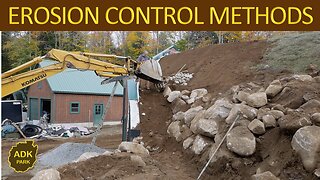 21:43
21:43
Creating A Simpler Life Off-Grid
6 months agoFinal Burial & Steep Slope Erosion Control
762 -
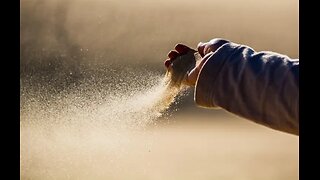 10:35
10:35
Environmental 911 Call The World Needs
5 months agoSAND - WORLD'S MOST CONSUMED RAW MATERIAL AFTER WATER IS IRUNNING OUT
6 -
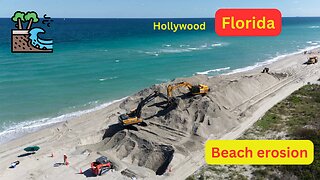 3:48
3:48
Robert Traveler
3 months agoFlorida From Above - Florida's Vanishing Beaches: The fight against coastal erosion
12 -
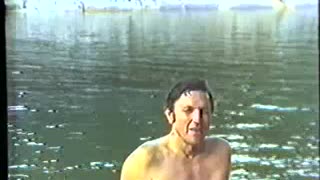 58:21
58:21
The Memory Hole
6 days agoThe Ecological Abuses of Real Estate Development
6811 -
 21:18
21:18
Whothrewthecurve
7 months agoFissures Opening Across the United States: Causes and Consequences
95 -
 2:17
2:17
Groshlawn
2 months ago $0.03 earnedRain Garden Landscape Design
21 -
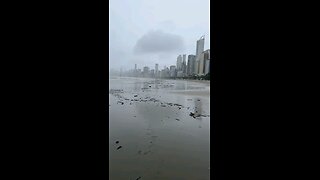 5:04
5:04
Zahid9255
6 months agoHow much dirt does the ocean throw out after rain?
69 -
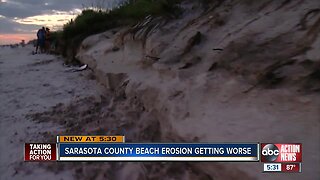 1:44
1:44
WFTS
4 years agoBeach erosion continues to plague Caspersen Beach
9 -
 10:03
10:03
The Justice Appalachian Homestead
8 months agoLandscaping, Drainage and Ecosystems
-
 20:21
20:21
HikingViking
2 years agoCentral Oregon - Three Sisters Wilderness - Pacific Crest Trail section of Yapoah Crater
59